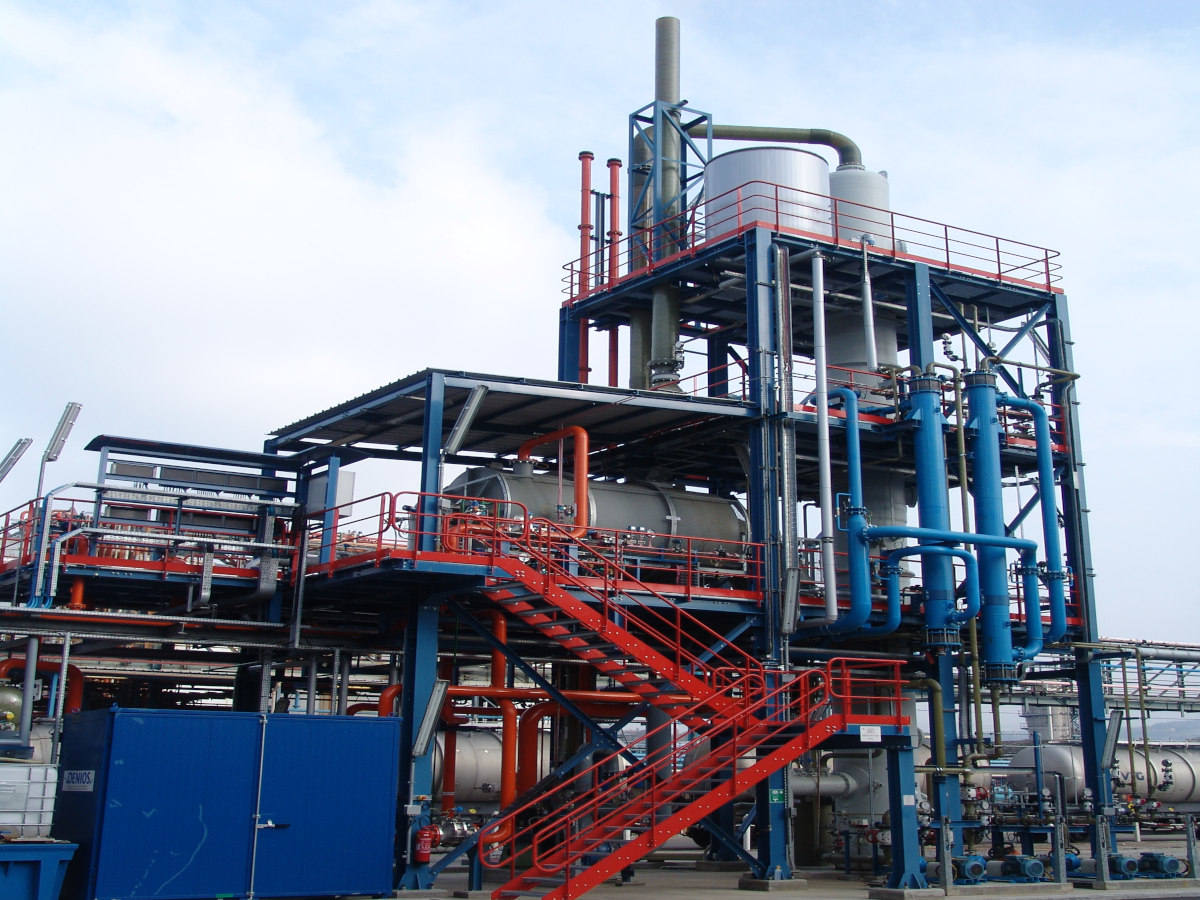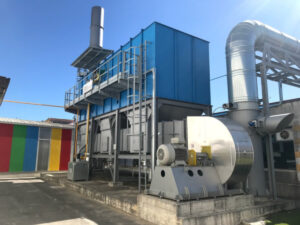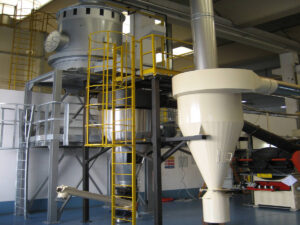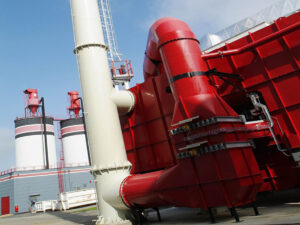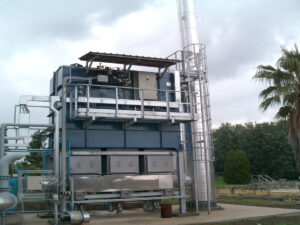The direct thermal oxidizers represent the simplest plants of the oxidizers group: in them, the polluted air is conveyed in a combustion chamber where, thanks to one or more burners, a temperature of 720-950°C is maintained to allow the proper pollutants combustion and the complete flow purification.
Direct thermal oxidizers: advantages
- High purification efficiency (>99%)
- Limited size and weight.
- Limited production of secondary pollutants such as carbon monoxide and acid gases (CO, NOx).
- Complete telematic management: electric panel with PLC and remote assistance.
- Independent combustion system to guarantee the proper plant functioning.
- Modulating combustion system to keep the correct operating temperature at different inlet pollutant loads.
- Combustion chamber internally equipped with high density ceramic fibre insulating refractory materials, to ensure a higher plant duration even with high concentration effluents or halogenated streams.
- Turnkey supply
Direct thermal oxidizers functioning principles
Thanks to its characteristics, this plant can be adapted to different special applications where it is necessary to reduce pollutants with high concentration, to use reagents injections in the combustion chamber and to realize a complete incineration. The spatial configuration, that is the way the plant is designed according to the installation site, can be with horizontal or vertical development and, in the latter case, the release stack is integrated in the combustion chamber.
Which are the principal elements of the direct thermal oxidizer?
The principal elements of this plant are:
- the burner, bringing and maintaining the airflow at a proper temperature and burning the pollutants contained in it
- the combustion chamber, allowing to hold the gas flow for a defined residence time, as to destroy the pollutants in it
- the eventual heat recovery, reusing the high-temperature cleaned effluent from the oxidizer combustion chamber, as to realise an energy saving
- the eventual pretreatment or after treatment systems for specifical technical problems resolution
To obtain the desired result in terms of pollutant treatment, the combustion chamber dimensioning and the burner choice are defined according to the burner choice are defined according to the reference technical parameters listed below:
- speed
- airflow
- temperature
- turbulence
- residence time
- flame development volume
To permit fully working conditions plant management and without the necessity of a complex training for the plant operator, our direct oxidizers are ordinarily equipped with a temperature measuring system, assisted by a board with PLC.
Direct thermal oxidizers with pretreatment and after treatment systems
It is possible to equip the direct oxidizers with pretreatment and after treatment sections to treat the more complex pollutant flows with more different technologies.
Pretreatment systems
Pretreatments are used to preserve the thermal oxidizer, reducing the concentration of particular types of pollutants which may compromise their functioning, such as:
- organic silicon compounds
- inorganic acids
- inorganic bases
- aerosol
- dusts
- painting oversprays
- oil mists and/or condensate microdroplets
In presence of these pollutants, it is possible to install proper pretreatment systems such as:
- cyclones, bags or cartridge filters and Venturi scrubbers for dusts filtration or abatement
- tower scrubbers for inorganic acids and bases abatement
- activated carbon adsorbers for compounds selective filtration
- demisters for H2O concentrations reduction
- more complex systems, to be evaluated case by case
After treatment systems
In the field of pretreatment systems, quick cooling technologies, such as quenchers, often followed by tower scrubbers, are preferred.
In case of necessity to reduce nitrogen gases, such as NOx, it is possible to use deNOx, SCR or SNCR after treatment systems.
After treatment systems are often applicated when it is needed to treat pollutants such as:
- halogenated VOC
- sulphur VOC
- nitrogen VOC
- silanes or siloxanes
Typical applications and target sectors
These plant solutions are applicated in the following fields:
- chemical
- pharmaceutical
- oil&gas
- waste treatment
BrofindⓇ direct thermal oxidizers allow to treat gas flows with high pollutants concentrations (up to 50% of the LEL – Lower Explosive Limit) or nitrogen-inerted effluents, which will have to be properly treated by means of, for example, air insufflations in combustion chamber.
Dedicated plant solutions development
All the BrofindⓇ direct thermal oxidizers can be customised and developed with dedicated plant solutions such as:
- Heat recovery downstream the combustion chamber, thanks to specific heat recovery solutions
- Possibility to install scrubbers for high temperatures for the treatment of acid smokes and corrosive gases
- Possibility to install standard quenchers or special Alloy quenchers for corrosive gases
- Use of Low NOx emission special burners
- Use of SCR (Selective Catalytic Reduction) deNOx systems to reduce nitrogen-based acid gases
- Complex streams injection in combustion chamber to reach specific abatement values
Services provided
Choosing Brofind means:
- Customer assistance 24/7
- Impartiality in recommending pollution control technologies since Brofind is owner of many of them
- Experience in the design and manufacturing of abatement plants since 1993
See the page dedicated to Brofind services to understand how we support our customers during the entire lifecycle of the product.
